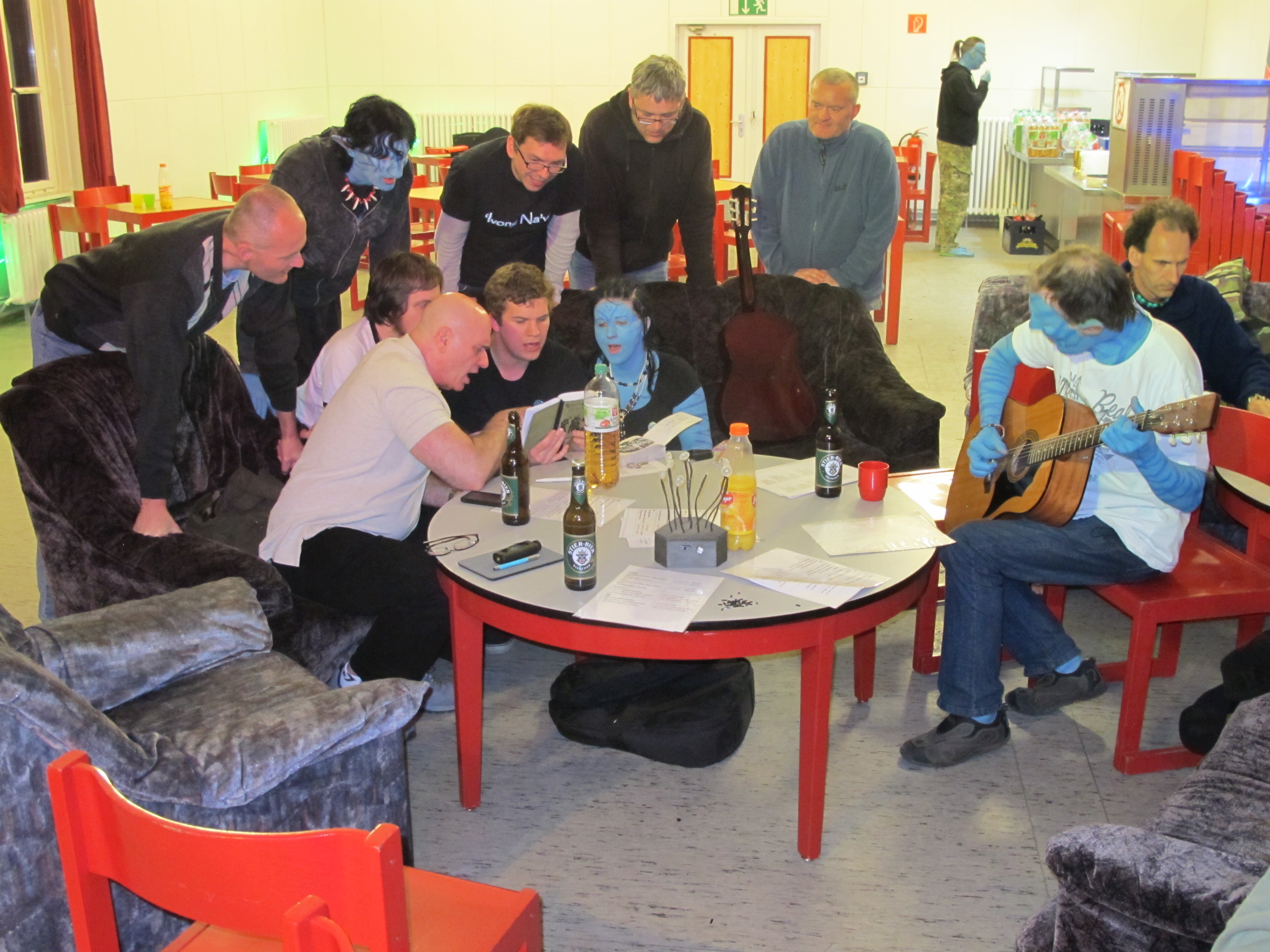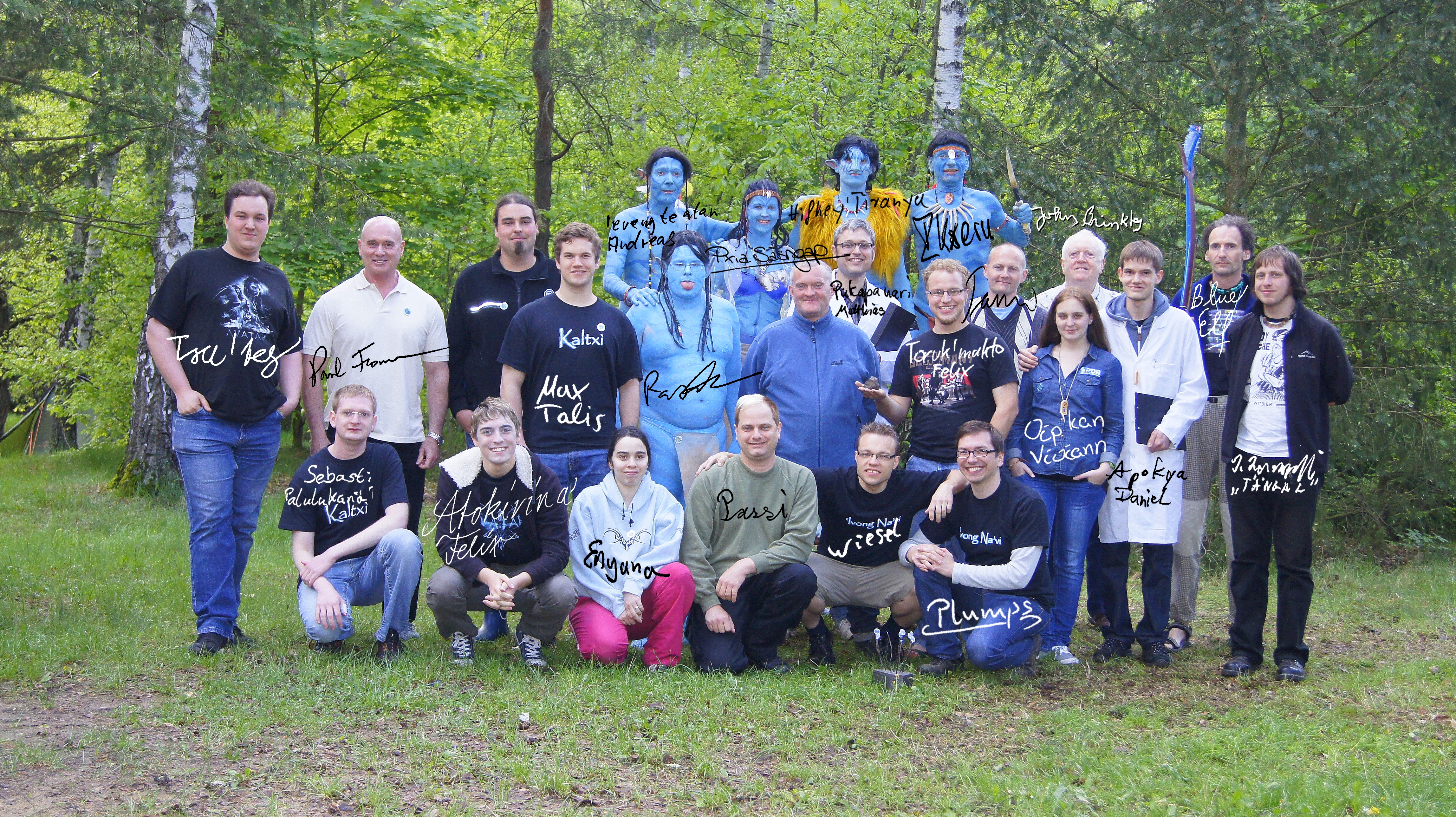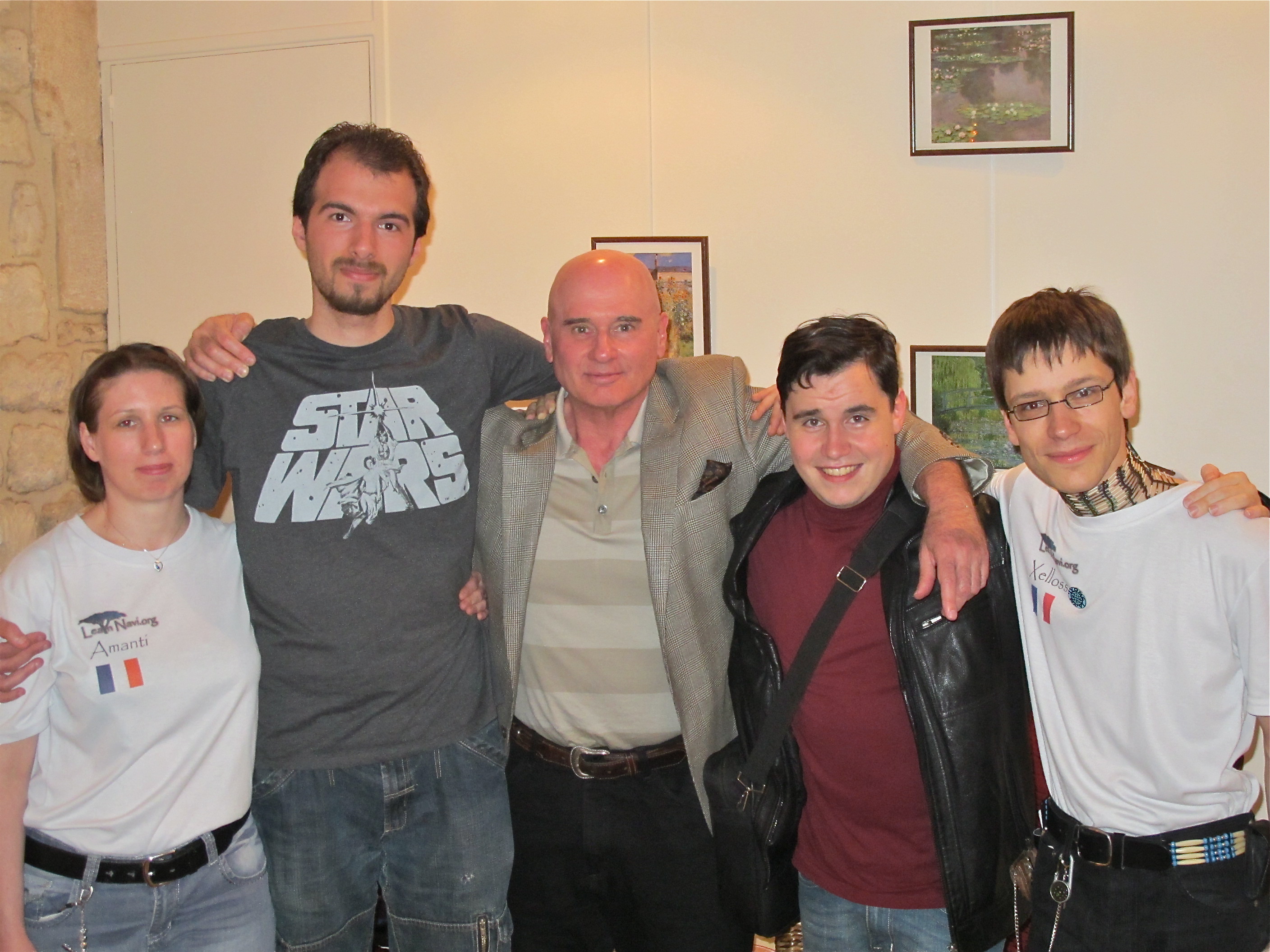Kaltxì, ma frapo—
Ke längu fìpostìmì ke’u a lu mip. I’m afraid there’s nothing new in this post, just an old favorite, The Hunt Song, which as most of you know was published in the Activist Survival Guide. It’s one of the four songs I translated during the filming of “Avatar” from English lyrics written by James Cameron. But I thought it would be useful for both listening and pronunciation practice. Besides, it’s always nice to have something ready at hand to trot out when people say to you, “Give me an example of what Na’vi sounds like.” For that purpose I often quote part of the Hunt Song, which has a nice “swing” to it.
It was interesting to decide what Na’vi poetry would sound like. Different languages base the structure of poetry on different elements. For example, poetry in Ancient Greek, Classical Latin, Classical Arabic, and Classic Persian is based on syllable length: in those languages, rhythmic poetical structures, called meters, consist of complicated arrangements of short and long (and sometimes extra-long) syllables. In some other languages, it’s not the length of syllables but the number of syllables per line that’s important. French poetry works that way. In still other languages—English and German, for example (excluding so-called “free verse”)—it’s stress that’s important: poetry depends on the arrangement of stressed and unstressed syllables in a line. Since stress is important in Na’vi—it’s the difference between ‘person’ and ‘woman,’ for example!—that’s what I based Na’vi poetry on.
Here’s the text of the Hunt Song along with a word-for-word gloss. As you’ll see, the syntax is sometimes a bit convoluted, with word orders that wouldn’t be common in ordinary conversation, and there are some unusual stresses. You’ll also notice that certain unstressed syllables are elided—that is to say, “swallowed up”—in a way that would be unlikely in speech. But that’s what’s called “poetic license.” 🙂
Taronway—The Hunt Song
English lyrics: James Cameron
Na’vi translation: Paul Frommer
1
We are walking your way Terìran ayoe ayngane
are-walking we towards-you
We are coming Zera’u
(we) are-coming
We are singing your way Rerol ayoe ayngane
are-singing we towards-you
So choose Ha ftxey
so choose
Choose one among you ’Awpot set ftxey ayngal a l(u) ayngakip
one now choose you that is among-you
Who will feed the People. ’Awpot a Na’viru yomtìyìng.
one that the-People will-feed
Chorus
Let my arrow strike true Oeyä swizaw nìngay tivakuk
my arrow truly let-strike
Let my spear strike the heart Oeyä tukrul txe’lanit tivakuk
my spear heart let-strike
Let the truth strike my heart Oeri tìngayìl txe’lanit tivakuk
as-for-me truth heart let strike
Let my heart be true. Oeyä txe’lan livu ngay.
my heart let-be true
2
You are fast and strong Lu nga win sì txur
are you fast and strong
You are wise Lu nga txantslusam
are you wise
I must be fast and strong Livu win sì txur oe zene
be fast and strong I must
So only Ha n(ì)’aw
so only
Only if I am worthy of you Pxan livu txo nì’aw oe ngari
worthy be if only I of-you
Will you feed the People. Tsakrr nga Na’viru yomtìyìng.
then you the-People will-feed
[Repeat chorus]
As you listen to and practice reciting this poem, it’s important to get a good feel for the rhythm. Basically, the poem divides into lines of four beats each. (Exception: the last line of the chorus has only three beats.) The above division into lines, which follows the English, is misleading in this respect. So here’s a recap of the poem with the four-beat lines arranged in a clear way. The stressed syllables in each line have been capitalized and bolded. In the recordings, I’ve tried to emphasize the stressed syllables to help you get the swing of the rhythm.
TerìRAN ayOe ayNGAne, zeRA’u
ReROL ayOe ayNGAne, ha FTXEY
’AWpot set FTXEY ayNGAL a l(u) ayNGAkip
’AWpot a NA’viru YOMtìYÌNG.
OEYä swiZAW nìNGAY tiVAkuk
OEYä tukRUL txe’LAnit tiVAkuk
OEri tìNGAYìl txe’LAnit tiVAkuk
OEYä txe’LAN livu NGAY.
Lu nga WIN sì TXUR, lu nga TXANtsluSAM
Livu WIN sì TXUR oe ZEne han(ì)’AW
PXAN livu TXO nì’AW oe NGAri,
TSAkrr nga NA’viru YOMtìYÌNG.
Tivaron nìzawnong, ma eylan!
P.S. —I wonder if there are any ayfamtseotu out there who might like to try setting the Hunt Song to music. 😉
Edit Sept. 1: Awpot –> ’Awpot (4 times) Irayo, ma Plumps!











